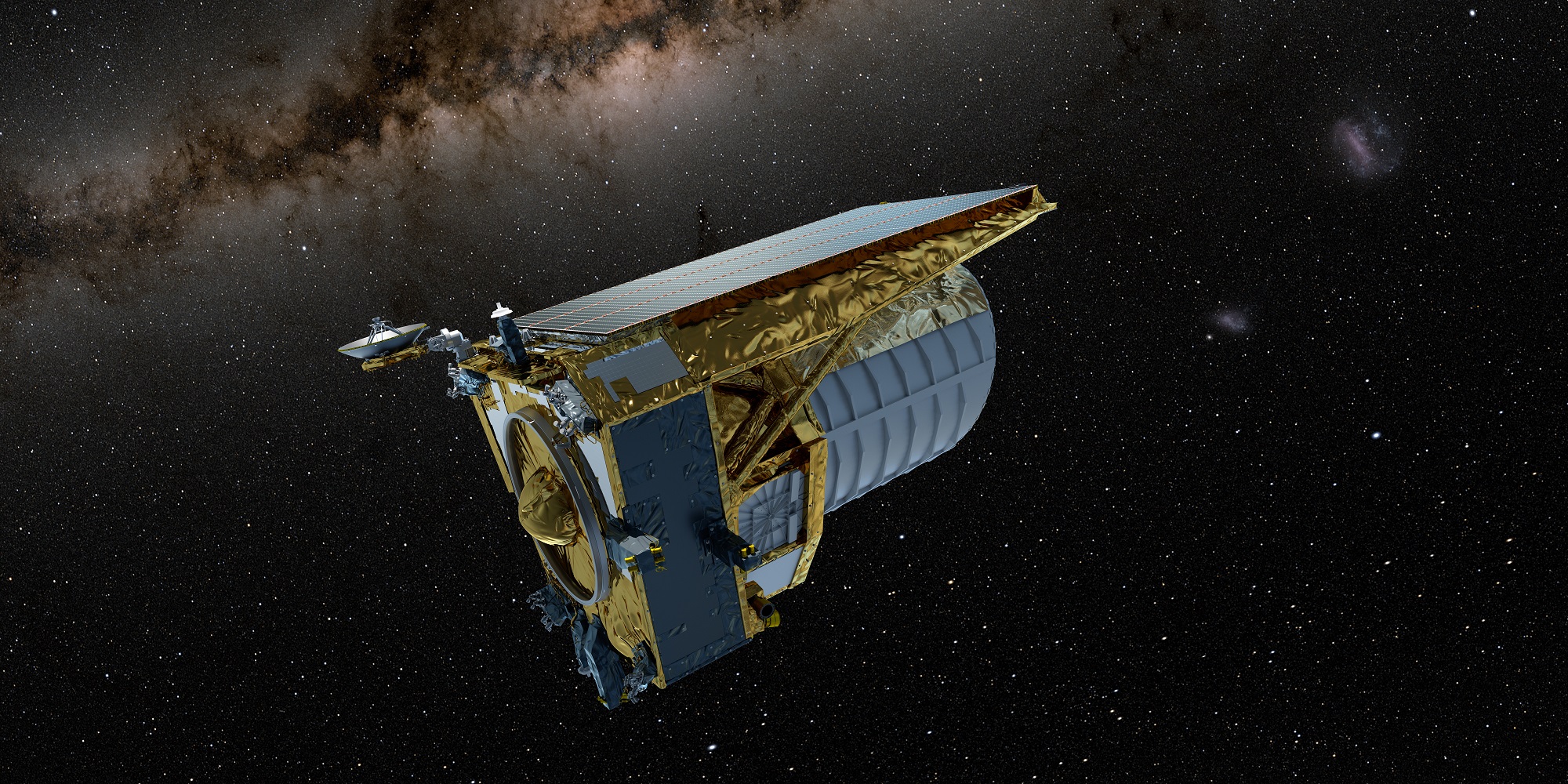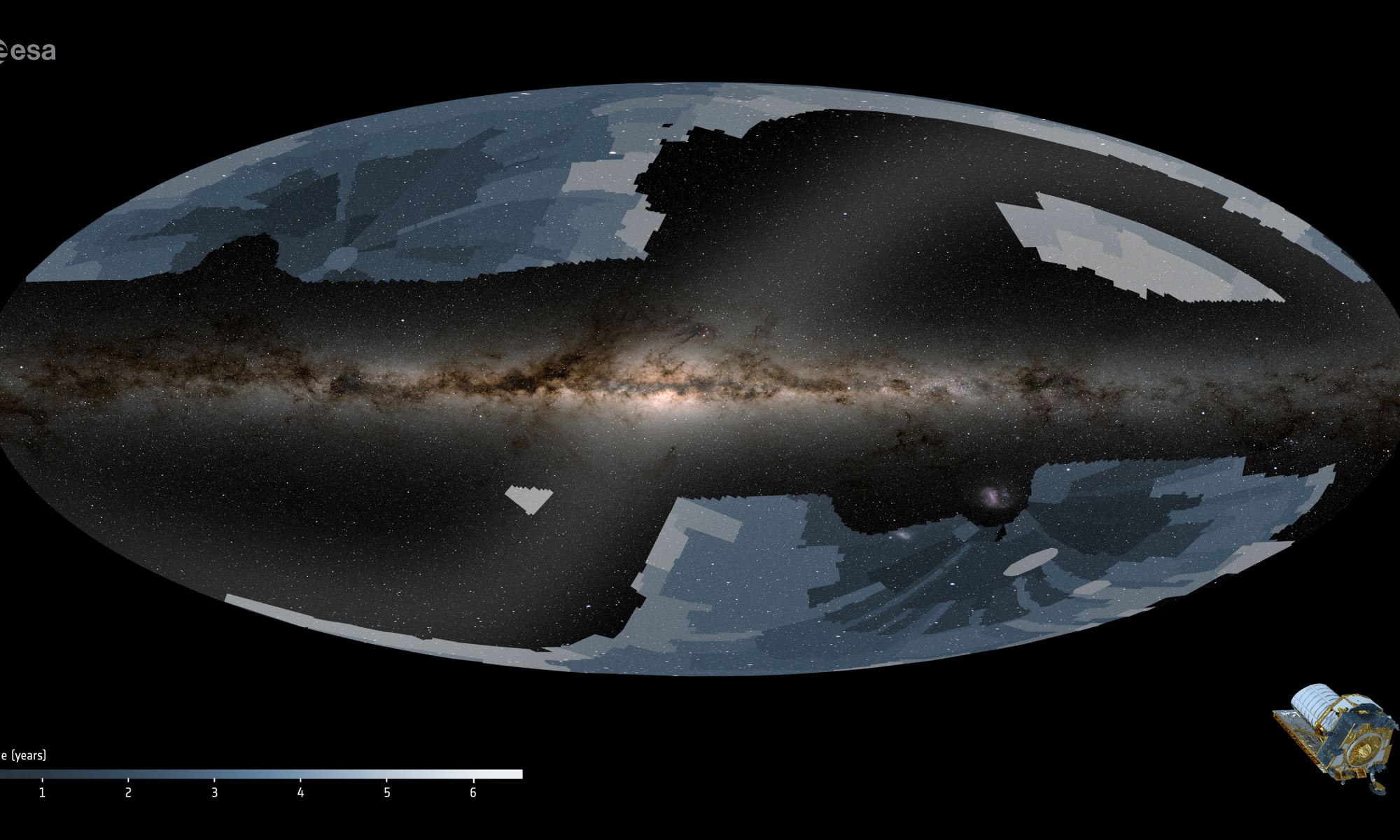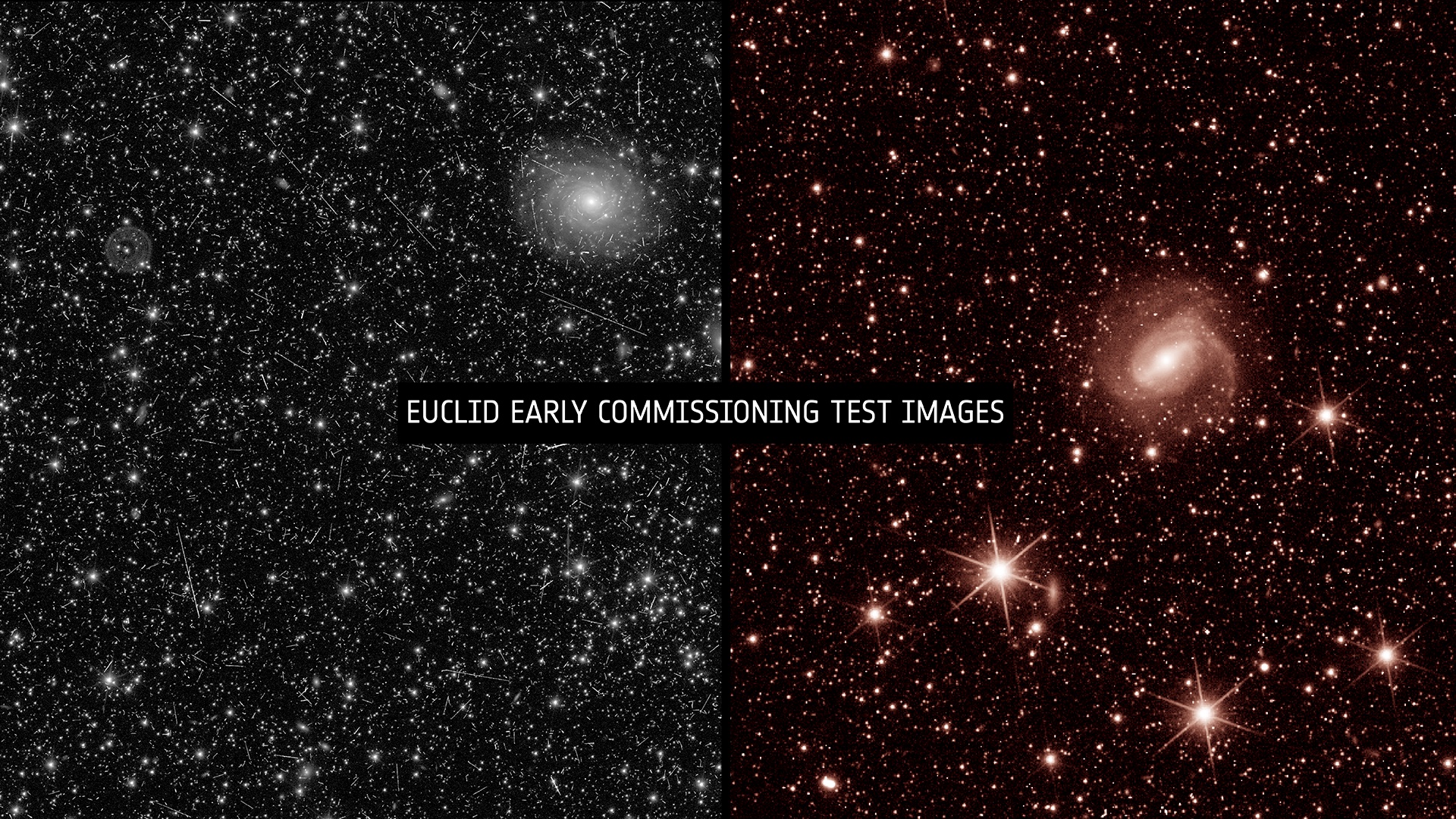Gravitational lensing is a concept where dark matter distorts space revealing its presence through its interaction with light. ESA’s Euclid mission is mapping out the gravitational lensing events to chart the large scale structure of the Universe. Euclid is also expected to discover in excess of 170,000 strong gravitational lensing features too. AI is expected to help achieve this goal but machine learning is still in its infancy so human beings are likely to have to confirm each lens candidate.
Continue reading “Euclid Could Find 170,000 Strong Gravitational Lenses”Check Out This Sneak Peek of the Euclid mission’s Cosmic Atlas

On July 1st, 2023 (Canada Day!), the ESA’s Euclid mission lifted off from Cape Canaveral, Florida, atop a SpaceX Falcon 9 rocket. As part of the ESA’s Cosmic Vision Programme, the purpose of this medium-class mission was to observe the “Dark Universe.” This will consist of observing billions of galaxies up to 10 billion light-years away to create the most extensive 3D map of the Universe ever created. This map will allow astronomers and cosmologists to trace the evolution of the cosmos, helping to resolve the mysteries of Dark Matter and Dark Energy.
The first images captured by Euclid were released by the ESA in November 2023 and May 2024, which provided a glimpse at their quality. On October 15th, 2024, the first piece of Euclid‘s great map of the Universe was revealed at the International Astronautical Congress (IAC) in Milan. This 208-gigapixel mosaic contains 260 observations made between March 25th and April 8th, 2024, and provides detailed imagery of millions of stars and galaxies. This mosaic accounts for just 1% of the wide survey that Euclid will cover over its six-year mission and provides a sneak peek at what the final map will look like.
Continue reading “Check Out This Sneak Peek of the Euclid mission’s Cosmic Atlas”Ice is Starting to Cloud Euclid's Optics
On July 1st, 2023, the European Space Agency (ESA) launched the Euclid Observatory, a mission that will spend the next six years investigating the composition and evolution of the Universe. In particular, Euclid will observe how the Universe has expanded over the past 10 billion years to test theories about Dark Energy. While fine-tuning and calibrating the telescope’s instruments in preparation for the mission’s first survey, the mission team noticed that a few layers of water ice formed on its mirrors after it entered the freezing cold of space.
While common, this is a problem for a highly sensitive mission like Euclid, which requires remarkable precision to investigate cosmic expansion. After months of research, the Euclid team tested a newly designed procedure to de-ice the mission’s optics. On March 20th, the ESA announced that the team’s de-icing approach worked (so far) and that Euclid’s vision has been restored. If the method proves successful, it will have validated the mission team’s plan to keep Euclid‘s optical system working for the rest of its mission.
Continue reading “Ice is Starting to Cloud Euclid's Optics”Euclid Begins its 6-Year Survey of the Dark Universe
On July 1, 2023, the Euclid Spacecraft launched with a clear mission: to map the dark and distant Universe. To achieve that goal, over the next 6 years, Euclid will make 40,000 observations of the sky beyond the Milky Way. From this data astronomers will be able to map the positions of billions of galaxies, allowing astronomers to observe the effects of dark matter.
Continue reading “Euclid Begins its 6-Year Survey of the Dark Universe”Euclid Recovers From a Navigation Problem and Finds its Guide Stars Again
On July 1st, 2023, the ESA’s Euclid mission headed for space, where it began its mission to observe the Universe and measure its expansion over time. The commissioning process began well as the mission team spent weeks testing and calibrating the observatory, then flew the mission out to Lagrange Point 2 (LP2). The telescope focused its mirrors, collected its “first light,” and the first test images it took were breathtaking! Unfortunately, Euclid hit a snag when its Fine Guidance Sensor (FGS) failed to lock onto its “guide stars.”
According to the latest update from the ESA, Euclid has found its guide stars again, thanks to a software patch. With its navigation woes now solved and its observation schedule updated, the telescope will now undergo its Performance Verification phase (its final phase of testing) in full “science mode.” Once that’s complete, Euclid will commence its nominal six-year mission, providing razor-sharp images and deep spectra of our Universe, looking back 10 billion years. This data will be used to create a grand survey of one-third of the entire sky and measure the influence of Dark Matter and Dark Energy.
Continue reading “Euclid Recovers From a Navigation Problem and Finds its Guide Stars Again”Euclid Reaches L2, Shares its First Test Image
For astronomers, the only thing better than new data is more new data. And we seem to be in a golden age of data gathering. We’ve gushed over the latest images from the James Webb Space Telescope and Hubble continues to make observations, but several new space telescopes are lesser known, such as Gaia, TESS, and Swift. And now a new space telescope enters the game, known as Euclid. Euclid is an infrared telescope launched last month by the European Space Agency (ESA). It took 11 years to design and build the telescope, and it has just taken test images with its two primary detectors.
Continue reading “Euclid Reaches L2, Shares its First Test Image”ESA's Euclid Mission is Off to Explore the Dark Universe
On Saturday, July 1st (Canada Day!), the ESA’s Euclid space telescope lifted off from Cape Canaveral in Florida. This next-generation astrophysics mission will spend the next few weeks flying to the Earth-Sun L2 Lagrange Point, where it will spend the next six years observing one-third of the sky. During that time, Euclid will observe billions of galaxies to a distance of 10 billion light-years, leading to the most extensive 3D map of the Universe ever created. This map will help astronomers and cosmologists resolve the lingering mystery of Dark Matter and Dark Energy (DM & DE).
Continue reading “ESA's Euclid Mission is Off to Explore the Dark Universe”Two New Space Telescopes Will Bring Dark Energy Into Focus
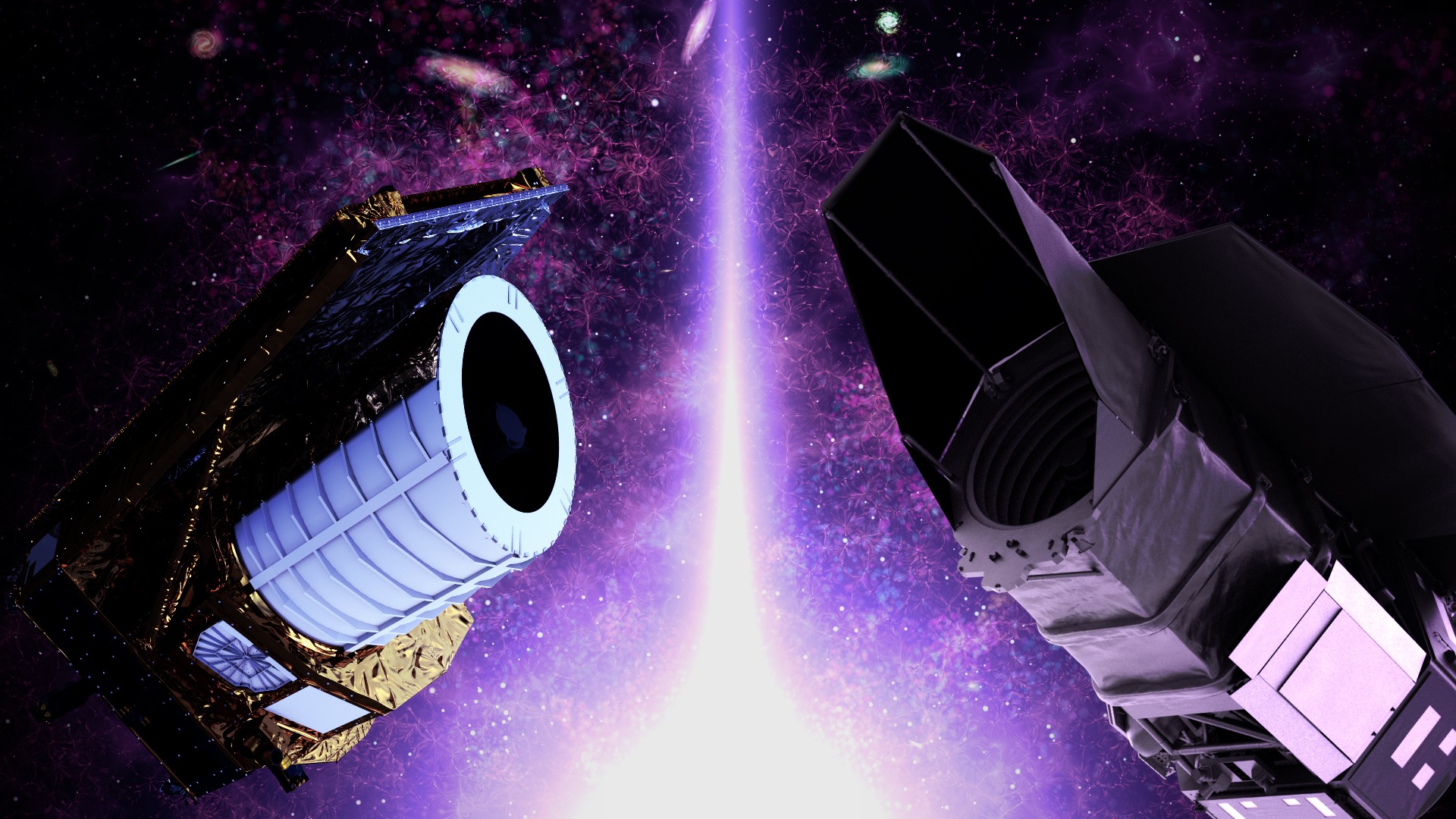
Since the 1990s, thanks to observations by the venerable Hubble Space Telescope (HST), astronomers have contemplated the mystery of cosmic expansion. While scientists have known about this since the late-1920s and early-30s, images acquired by Hubble‘s Ultra Deep Fields campaign revealed that the expansion has been accelerating for the past six billion years! This led scientists to reconsider Einstein’s theory that there is an unknown force in the Universe that “holds back gravity,” which he named the Cosmological Constant. To astronomers and cosmologists today, this force is known as “Dark Energy.”
However, not everyone is sold on the idea of Dark Energy, and some believe that cosmic expansion could mean there is a flaw in our understanding of gravity. In the near future, scientists will benefit from next-generation space telescopes to provide fresh insight into this mysterious force. These include the ESA’s Euclid mission, scheduled for launch this July, and NASA’s Nancy Grace Roman Space Telescope (RST), the direct successor to Hubble that will launch in May 2027. Once operational, these space telescopes will investigate these competing theories to see which holds up.
Continue reading “Two New Space Telescopes Will Bring Dark Energy Into Focus”Digging Through Kepler Data Turns Up a Near Twin of Jupiter
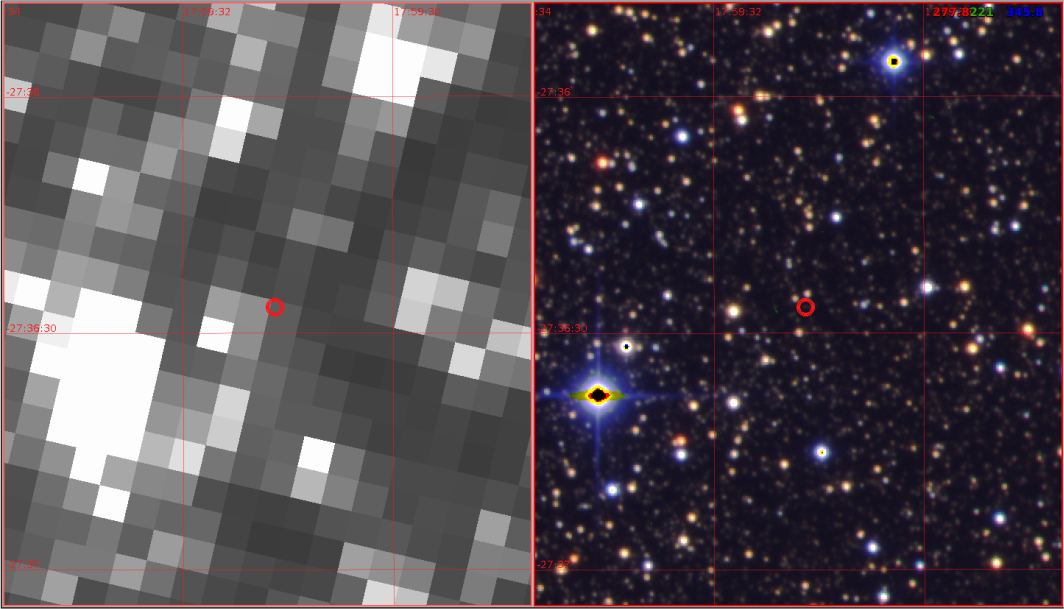
NASA’s Kepler planet-hunting spacecraft was deactivated in November 2018, about ten years after it launched. The mission detected over 5,000 candidate exoplanets and 2,662 confirmed exoplanets using the transit method. But scientists are still working with all of Kepler’s data, hoping to uncover more planets in the observations.
A team of researchers have announced the discovery of one more planet in the Kepler data, and this one is nearly a twin of Jupiter.
Continue reading “Digging Through Kepler Data Turns Up a Near Twin of Jupiter”

